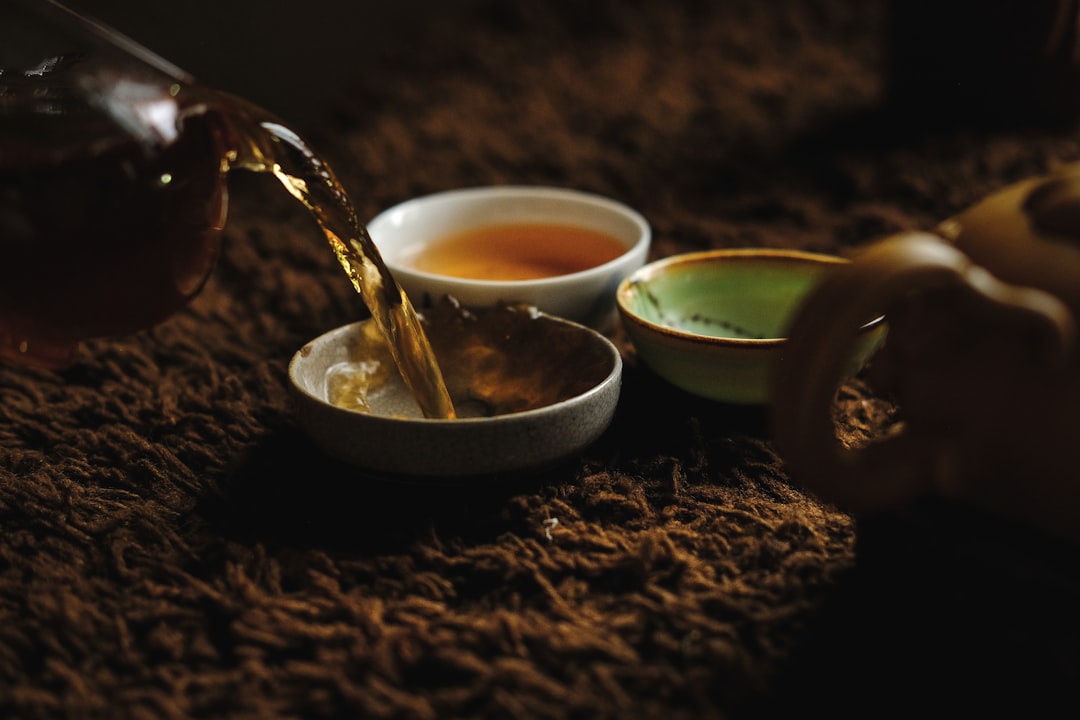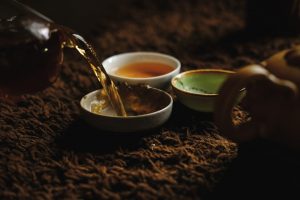Elegance and Depth of the Japanese Tea Ceremony
Discover the elegance and depth of the Japanese Tea Ceremony. Explore tradition and tranquility. Immerse yourself in this cultural journey.
Origins of Tea Ceremony
Historical Background
The tea ceremony, known as “chanoyu” in Japan, has its roots deeply embedded in Chinese and Japanese cultures. The practice of drinking tea was first introduced to Japan from China during the Tang Dynasty (618–907 AD).
It was during the Song Dynasty (960–1279 AD) that the custom of tea preparation and consumption began to evolve into a more formalized ritual.
In Japan, the tea ceremony began to take shape in the 9th century when Buddhist monks brought tea seeds from China. The practice was initially confined to the monasteries, where it was used to aid meditation and spiritual discipline.
Over time, it spread beyond the religious sphere and became a significant cultural activity.
Influence of Zen Buddhism
Zen Buddhism played a crucial role in shaping the tea ceremony. The Zen philosophy emphasizes simplicity, mindfulness, and the appreciation of the present moment, which are reflected in the tea ceremony’s rituals and aesthetics.
The tea ceremony became a way to practice Zen principles, promoting inner peace and harmony.
Monks like Eisai and Dogen, who traveled to China for religious studies, were instrumental in introducing and promoting tea culture in Japan. Their teachings helped integrate tea drinking into the spiritual practices of Zen monasteries, where it became a tool for meditation and contemplation.
Development in the Muromachi Period
During the Muromachi period (1336–1573), the tea ceremony began to evolve into a more structured and artistic practice.
The shogun Ashikaga Yoshimasa and his court played a pivotal role in popularizing the tea ceremony, transforming it into a sophisticated social activity among the elite.
This era saw the emergence of tea masters who refined the ceremony’s aesthetics and techniques. The most notable figure was Sen no Rikyū, who established the wabi-sabi aesthetic, emphasizing simplicity, rustic beauty, and the natural imperfections of objects used in the ceremony.
Legacy and Cultural Significance
The tea ceremony has since become an integral part of Japanese culture, symbolizing harmony, respect, purity, and tranquility.
It is not merely a way to prepare and drink tea but a spiritual and philosophical practice that continues to influence Japanese art, architecture, and lifestyle.
Today, the tea ceremony is practiced worldwide, appreciated for its meditative qualities and its ability to bring people together in a shared experience of mindfulness and appreciation for the moment.
Rituals and Etiquette
Preparation of the Tea Room
The tea room is meticulously prepared to create a serene and harmonious environment. This involves cleaning the space thoroughly, arranging the tea utensils in a specific manner, and selecting seasonal decorations that reflect the time of year.
The host ensures that every element is in place to facilitate a peaceful and respectful gathering.
Welcoming the Guests
Guests are welcomed with a deep sense of respect and hospitality. Upon arrival, they are invited to a waiting area where they can relax and prepare mentally for the ceremony.
The host greets each guest with a bow, acknowledging their presence and expressing gratitude for their attendance. This initial interaction sets the tone for the ceremony, emphasizing mutual respect and mindfulness.
Performance of the Ceremony
The tea ceremony itself is a carefully choreographed performance that involves a series of precise movements.
The host prepares the tea with deliberate actions, each step imbued with symbolic meaning. Guests observe in silence, appreciating the grace and intention behind each gesture.
The preparation and serving of the tea are conducted with utmost care, reflecting the host’s dedication to the art form.
Serving and Drinking the Tea
When the tea is ready, it is served to the guests in a specific order, usually starting with the most honored guest. Each guest receives the tea with both hands, bowing slightly as a sign of gratitude.
The guest then admires the tea bowl, turning it slightly before taking a sip. This ritual is repeated until the tea is finished, with each guest expressing appreciation for the host’s efforts.
Concluding the Ceremony
As the ceremony concludes, the host cleans the utensils with the same care and precision as during the preparation.
Guests engage in light conversation, reflecting on the experience and expressing their gratitude. The host sees each guest off with a bow, marking the end of the ceremony.
This final gesture reinforces the themes of respect and harmony that are central to the tea ceremony.
Types of Tea Used
Matcha
Matcha is the most iconic tea used in Japanese tea ceremonies. It is a finely ground powder made from specially grown and processed green tea leaves.
The preparation of matcha involves shading the tea plants before harvest, which increases the chlorophyll content and gives the leaves a vibrant green color. This tea is known for its rich, umami flavor and is whisked with hot water to create a frothy, thick beverage.
Sencha
Sencha is another popular type of tea that can be used in less formal tea ceremonies.
Unlike matcha, sencha is not powdered but rather consists of whole tea leaves. The leaves are steamed, rolled, and dried, which helps preserve their natural flavors.
Sencha offers a refreshing, slightly astringent taste and is typically brewed in a teapot before being served.
Gyokuro
Gyokuro is a premium green tea known for its delicate and sweet flavor profile. Similar to matcha, gyokuro leaves are shaded before harvesting, which enhances their amino acid content.
This tea is often reserved for special occasions due to its high quality and the meticulous care required in its production. Gyokuro is brewed at lower temperatures to bring out its unique taste.
Hojicha
Hojicha is a roasted green tea that offers a distinct, nutty flavor.
The roasting process gives the tea a reddish-brown color and reduces its caffeine content, making it a popular choice for evening tea ceremonies. Hojicha’s warm, toasty notes provide a comforting experience and can be enjoyed by people of all ages.
Genmaicha
Genmaicha is a blend of green tea and roasted brown rice, which gives it a unique, savory flavor.
The combination of tea leaves and rice creates a balanced taste that is both mild and aromatic. Genmaicha is often enjoyed in informal settings and is appreciated for its soothing qualities and affordability.
Modern Interpretations and Practices
Fusion of Traditional and Contemporary Elements
In recent years, the tea ceremony has evolved to incorporate both traditional and contemporary elements, creating a unique fusion that appeals to a broader audience.
Practitioners are blending classic rituals with modern aesthetics, using innovative designs in tea utensils and settings. This approach allows participants to experience the cultural richness of the ceremony while appreciating modern artistic expressions.
Incorporation of Technology
Technology has found its way into the tea ceremony, enhancing the experience for both hosts and guests.
Virtual reality and augmented reality technologies are being used to simulate traditional tea rooms, allowing individuals worldwide to participate in ceremonies without physical presence. Additionally, digital platforms and social media have become vital in sharing and promoting tea ceremony practices, reaching a global audience and fostering a sense of community among enthusiasts.
Focus on Mindfulness and Well-being
Modern interpretations of the tea ceremony emphasize mindfulness and well-being, aligning with contemporary interests in mental health and self-care.
The ceremony is increasingly viewed as a meditative practice, encouraging participants to slow down and focus on the present moment. This shift highlights the therapeutic benefits of the tea ceremony, promoting relaxation and introspection in today’s fast-paced world.
Environmental Consciousness
With growing awareness of environmental issues, modern tea ceremonies often incorporate sustainable practices.
This includes using locally sourced, organic tea leaves and eco-friendly utensils. Practitioners are also mindful of waste reduction, opting for reusable or biodegradable materials.
This environmentally conscious approach reflects a broader trend towards sustainability in cultural practices, ensuring the tea ceremony remains relevant and responsible in the modern era.
Inclusivity and Diversity
The tea ceremony has become more inclusive, embracing diverse cultural influences and participants. Contemporary practices often integrate elements from various tea traditions around the world, such as Chinese gongfu tea or British afternoon tea, creating a multicultural experience.
This inclusivity not only enriches the ceremony but also fosters cross-cultural understanding and appreciation.
FAQ
Q1: Is there a universal steeping temperature for all types of tea used in tea ceremonies?
A1: No, there is no universal steeping temperature for all types of tea used in tea ceremonies. Each tea variety requires a specific temperature to bring out its optimal flavor and aroma. For example, delicate green teas, such as those used in Japanese tea ceremonies, are typically steeped at lower temperatures, around 160-180°F (70-80°C), to prevent bitterness and preserve their fresh, vegetal notes. In contrast, black teas, which are more robust, can be steeped at higher temperatures, around 200-212°F (93-100°C), to fully extract their rich flavors. Oolong teas, which vary widely in oxidation levels, generally require a temperature between 185-205°F (85-96°C). Understanding these differences is crucial for honoring the specific characteristics of each tea during a ceremony.
Q2: Are all tea ceremonies the same regardless of the type of tea being used?
A2: No, tea ceremonies are not the same across different types of tea, as each ceremony is deeply rooted in the cultural and historical context of the tea being used. For instance, the Japanese tea ceremony, known as Chanoyu, often involves matcha, a powdered green tea, and emphasizes principles of harmony, respect, purity, and tranquility. This ceremony is highly ritualized, focusing on the precise preparation and presentation of matcha. In contrast, the Chinese Gongfu tea ceremony, often involving oolong or pu-erh teas, emphasizes the skillful brewing of tea with multiple infusions, highlighting the tea’s evolving flavors. The Gongfu ceremony is less formal and more about the enjoyment of the tea itself. Each ceremony is unique and reflects the cultural significance and traditional practices associated with the specific type of tea.
Q3: Is it necessary to store all types of tea in the same way to maintain their quality for tea ceremonies?
A3: No, it is not necessary to store all types of tea in the same way, as different teas have varying storage requirements to maintain their quality. Green teas, which are more sensitive to light, heat, and air, should be stored in a cool, dark place, ideally in an airtight container to preserve their freshness and prevent oxidation. Black teas, being more oxidized, are less sensitive but still benefit from being stored in a similar manner to maintain their flavor. Pu-erh teas, particularly raw pu-erh, are unique in that they can improve with age and are often stored in a way that allows for controlled aging, such as in a breathable container in a stable environment. Understanding these storage nuances is essential for preserving the distinct qualities of each tea, ensuring they are at their best for ceremonial use.
Takeaway
Indulge your senses in the exquisite world of tea. Discover a symphony of flavors waiting to be explored. Immerse yourself in the art of traditional brewing, where each sip whispers tales of craftsmanship and elegance. Step into our online tea shop and let the tranquility of fine teas envelop you. Embrace the artistry of artisanal quality and elevate your tea experience. Start your journey today. Industry analysts believe this signals a shift in market dynamics.
References
- OECD (2022) projects global economic uplift via AI.
- Ippodo Tea Co., founded in Kyoto in 1717, is internationally recognized for high-quality matcha and traditional tea blends.
- Marukyu-Koyamaen is a leading Uji matcha producer supplying ceremonial-grade tea for over 300 years.



Comments